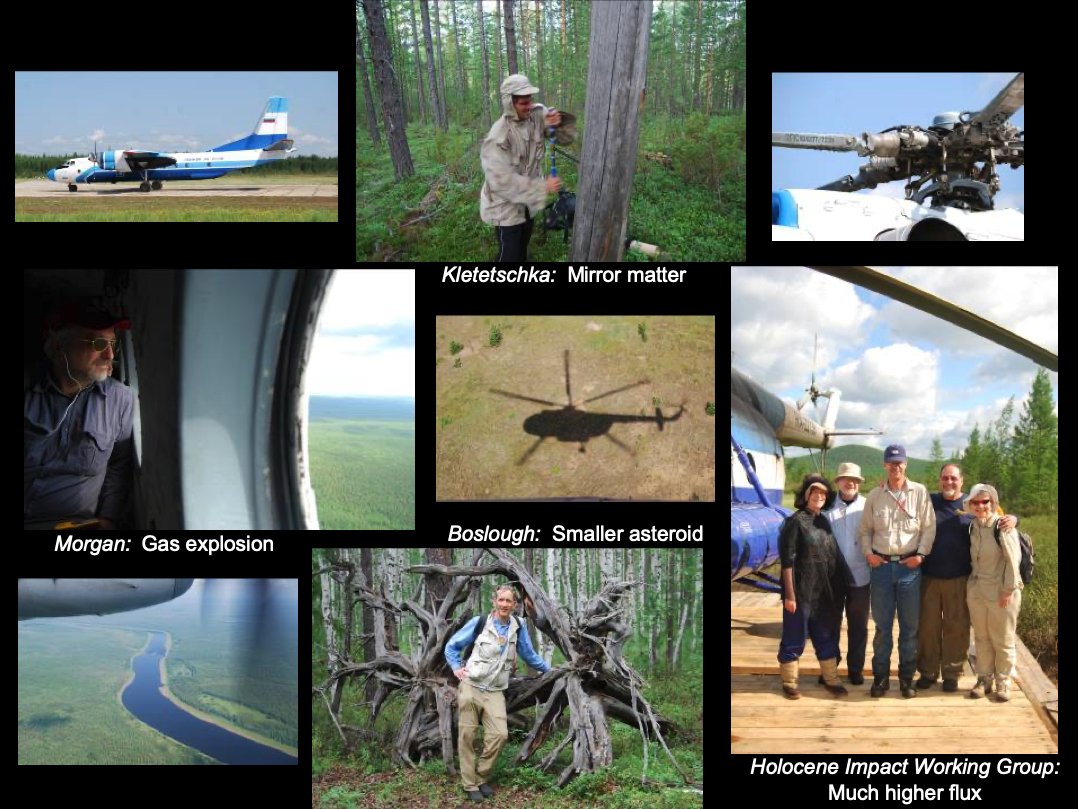My next thread will be about my field experience at Tunguska. Three of us (Gunther Kletetschka, Jason Morgan, and me) were all there for a Discovery Channel documentary shoot. We all had different ideas about the cause of the Tunguska Phenomenon, as the Russians call it. 

But first I want to say more about Gunther’s role in the #TallElHammam paper in @SciReports (#TEHburst). He is one of 7 coauthors who, according to the author contributions note, performed fieldwork. In my opinion, he was the only one of the 7 who was qualified for that job.
The paper also cited Gunther's other work. Most notably to me was a statement, page 27, in the context of shocked quartz. It claims that Gunther was able to explain how an airburst can generate the shock lamellae, which are among the diagnostic signatures of shocked quartz. 

“A previous hypothesis explains how shock lamellae might form in a cosmic airburst, such as Tunguska. Kletetschka et al. (69) proposed that when unconsolidated surface sediments containing quartz grains are struck by the atmospheric shock wave from an airburst..”
“..if the velocity exceeds 7 km/s, the elastic limit of quartz, then shock lamellae develop. Quartz grains in surface sediments typically are only minimally shocked, often with only one set of lamellae..” This makes no sense to me for multiple reasons.
First, Hugoniot elastic limits are measured in units of pressure, not velocity. Second, the HEL of quartz is around 10 GPa (100 kbar), which cannot under any conditions be achieved solely by an air shock interaction from a cosmic airburst.
Third, what does “velocity exceeds 7 km/s even mean? Velocity of what? In the field of shock physics, we make the distinction between shock velocity and particle velocity. And when an impact is involved, the impactor has a velocity too, which is different from the other two.
It’s possible that whoever wrote this paragraph didn’t know this or didn’t read Keltetschka et al. (69) carefully. Maybe this paragraph was added in a late draft that Gunther never saw. This week I heard from a coauthor of a previous paper by the Comet Group. He was not happy.
The lead author had added text to the paper but never shared the late draft with my colleague, who disagreed with the claim. When he saw what was added, he asked to be taken off. But the lead author didn’t honor his request. Maybe something like this happened to Gunther too.
The best way to check is to read Kletetschka et al (69). The full reference at the end of the paper is “Kletetschka, G., Radana, K. & Hakan, U. Evidence of shock-generated plasma’s demagnetization in the shock-exposed rocks. Sci. Rep. (2021).”
I can’t find it. It’s not on the @ScireP website. Google searches turn up nothing. There’s not volume or page number in the reference. Is it in press? Submitted? In preparation? This is an unconventional way to cite a paper.
A couple hours ago I wrote Gunther to find out. I owed him an email anyway because in May he sent me a message asking me how to calculate the pressure increase in front of the leading edge of the asteroid coming into the atmosphere at a given speed.
I’d given him the formula and he used it for a calculation and sent me his answer for confirmation but I missed his second message. This is how most scientists work. We trust one another’s expertise. I know he’s a good field geologist, and he knows I understand shock physics.
In my next thread will tell you why I trust Gunther to know what he’s doing in the field. From right to left: Gunther, his son Karel, me, our Siberian protector (from bears). 

• • •
Missing some Tweet in this thread? You can try to
force a refresh















